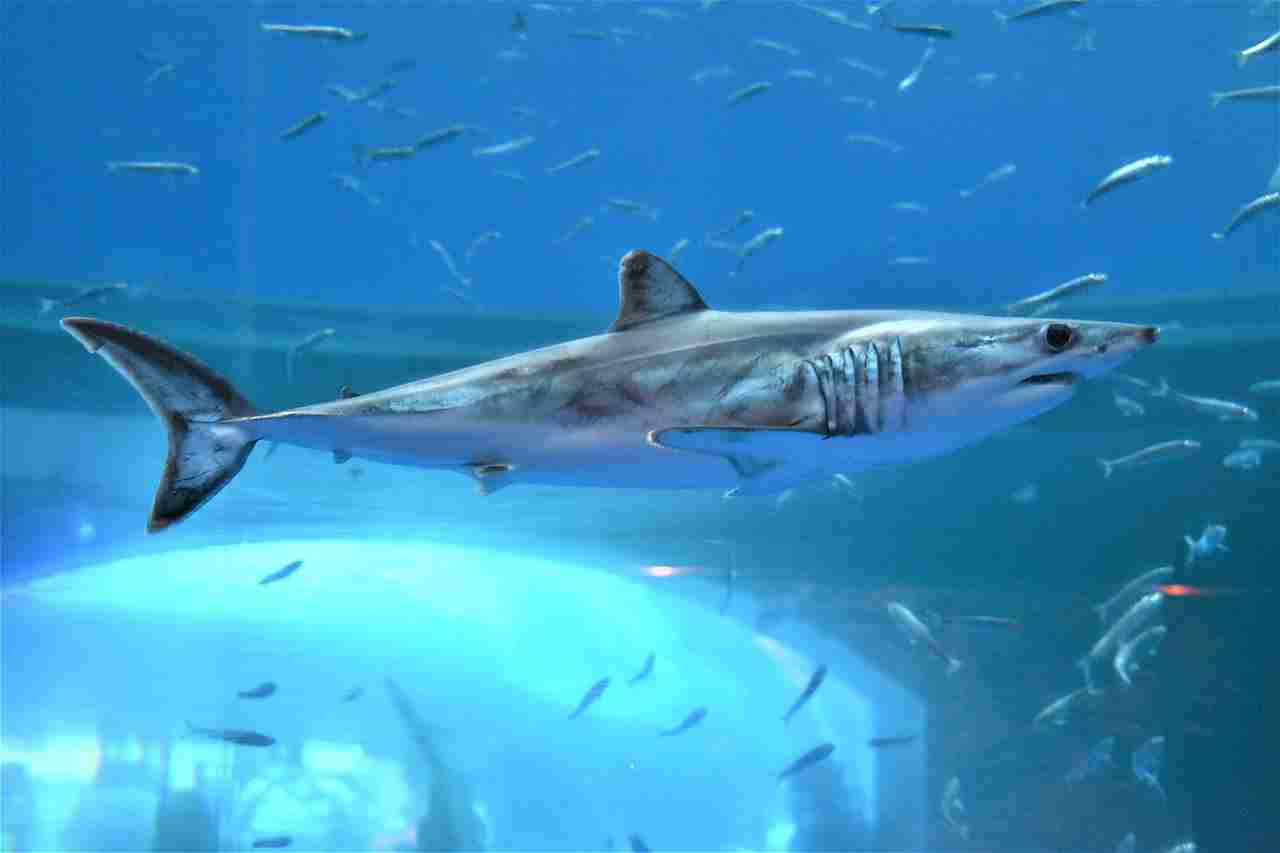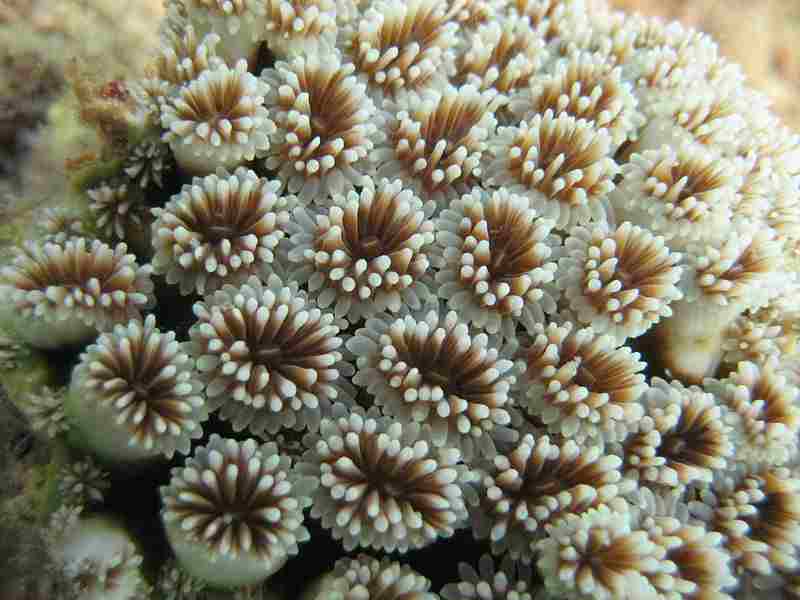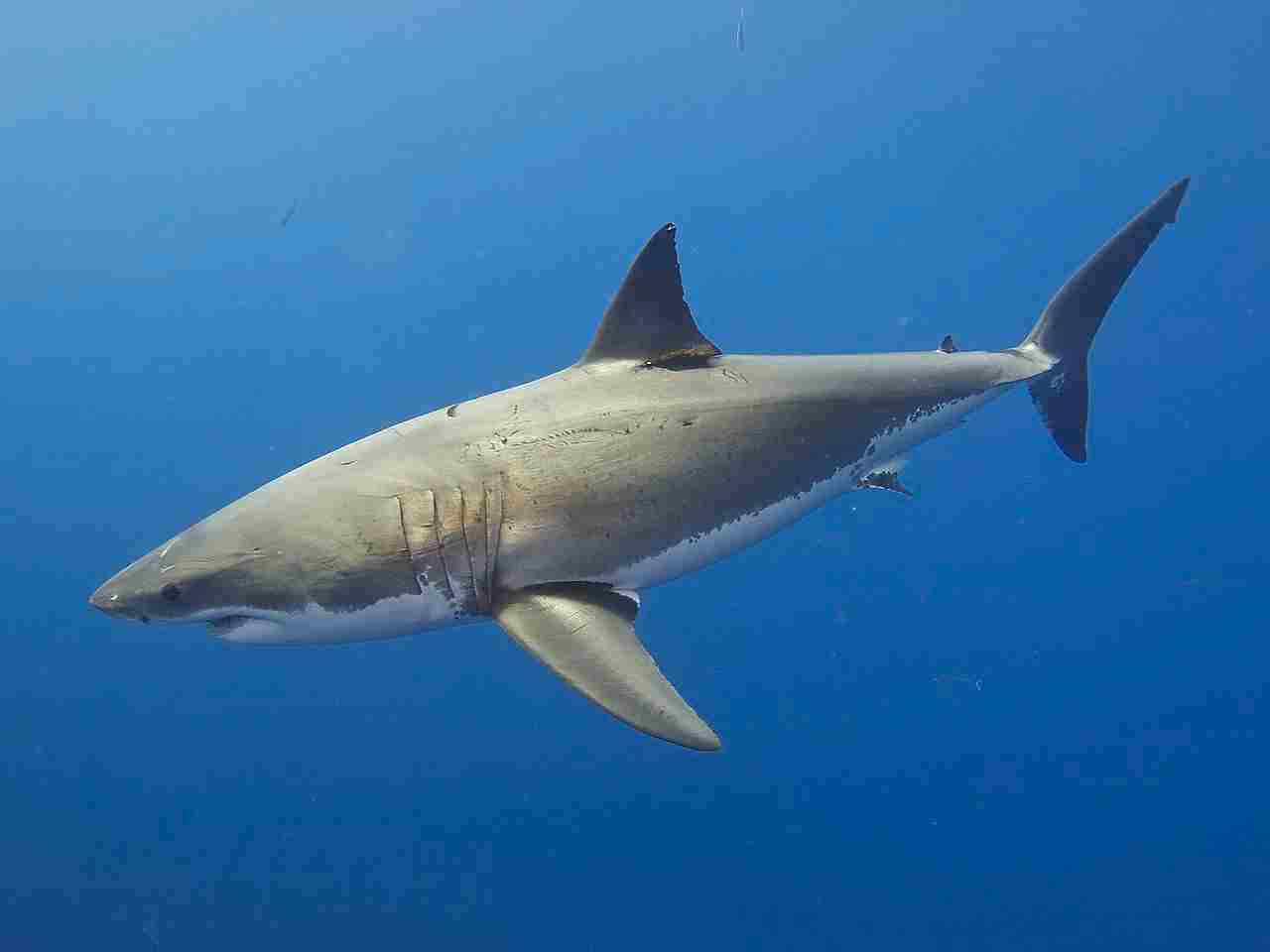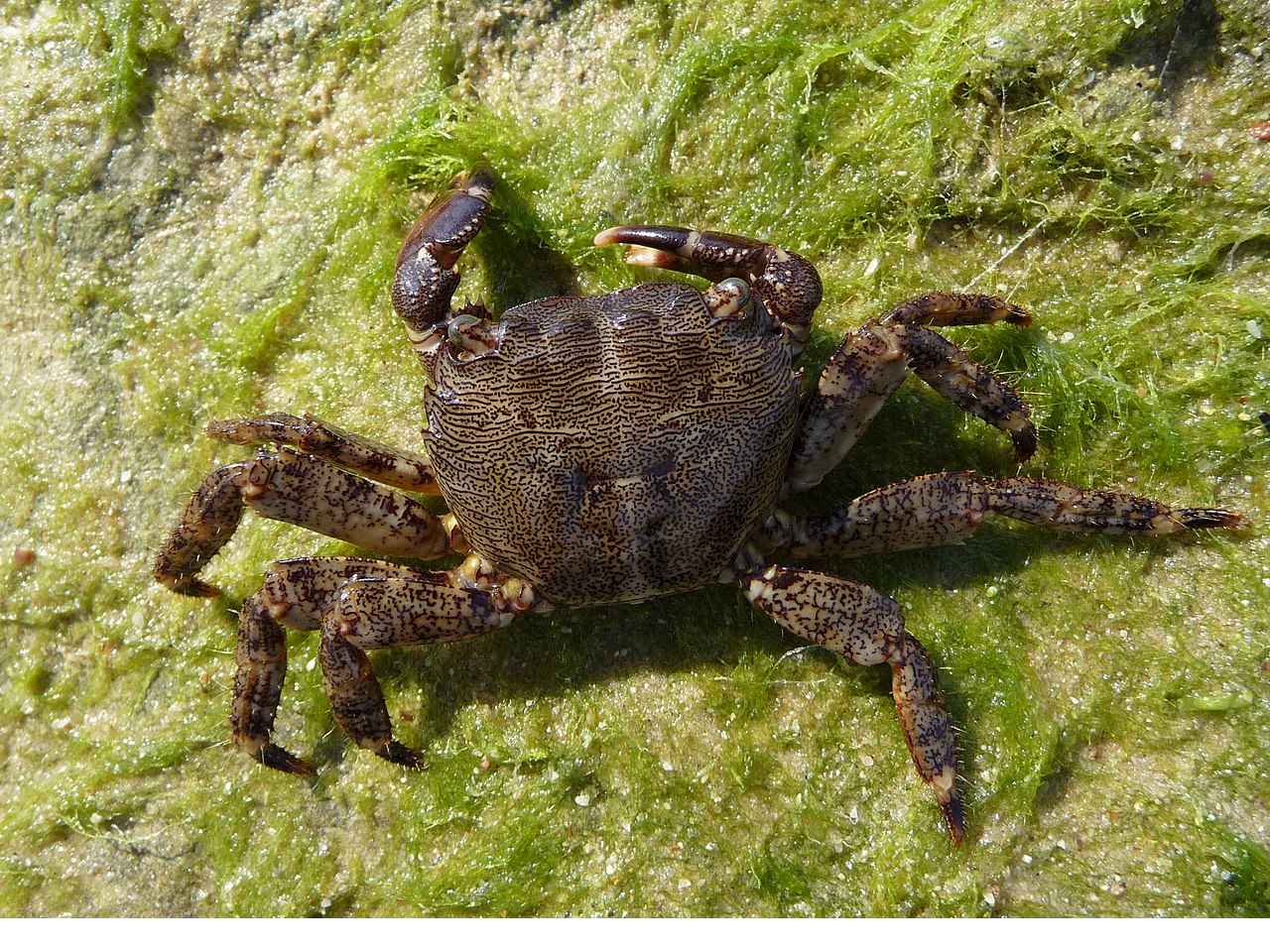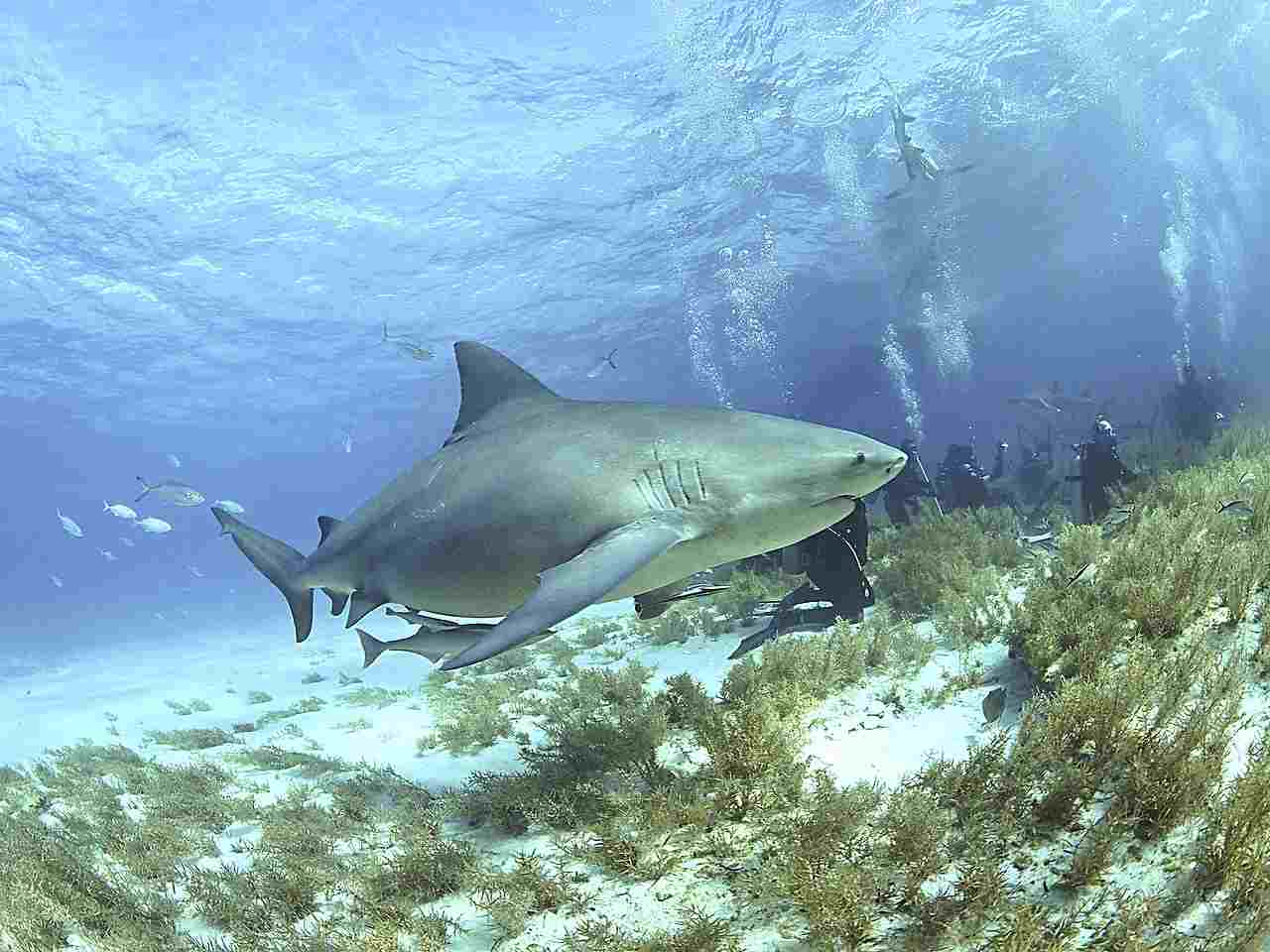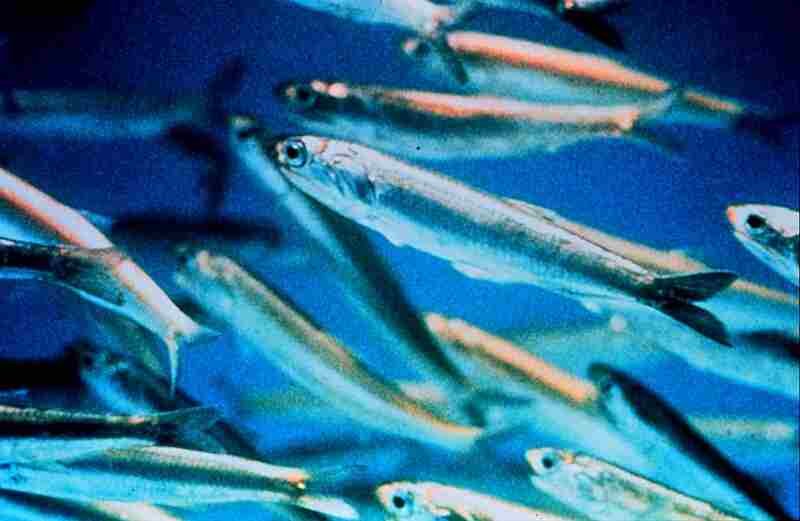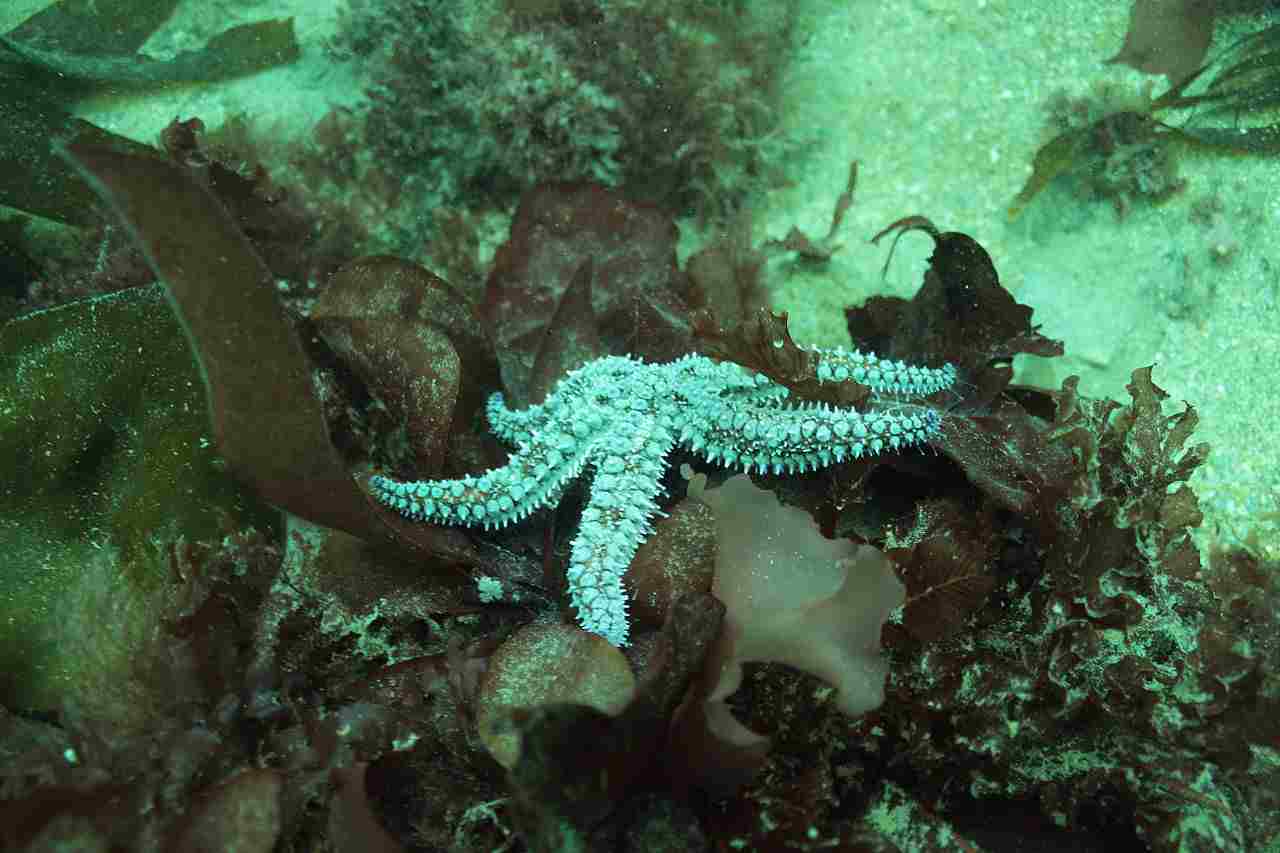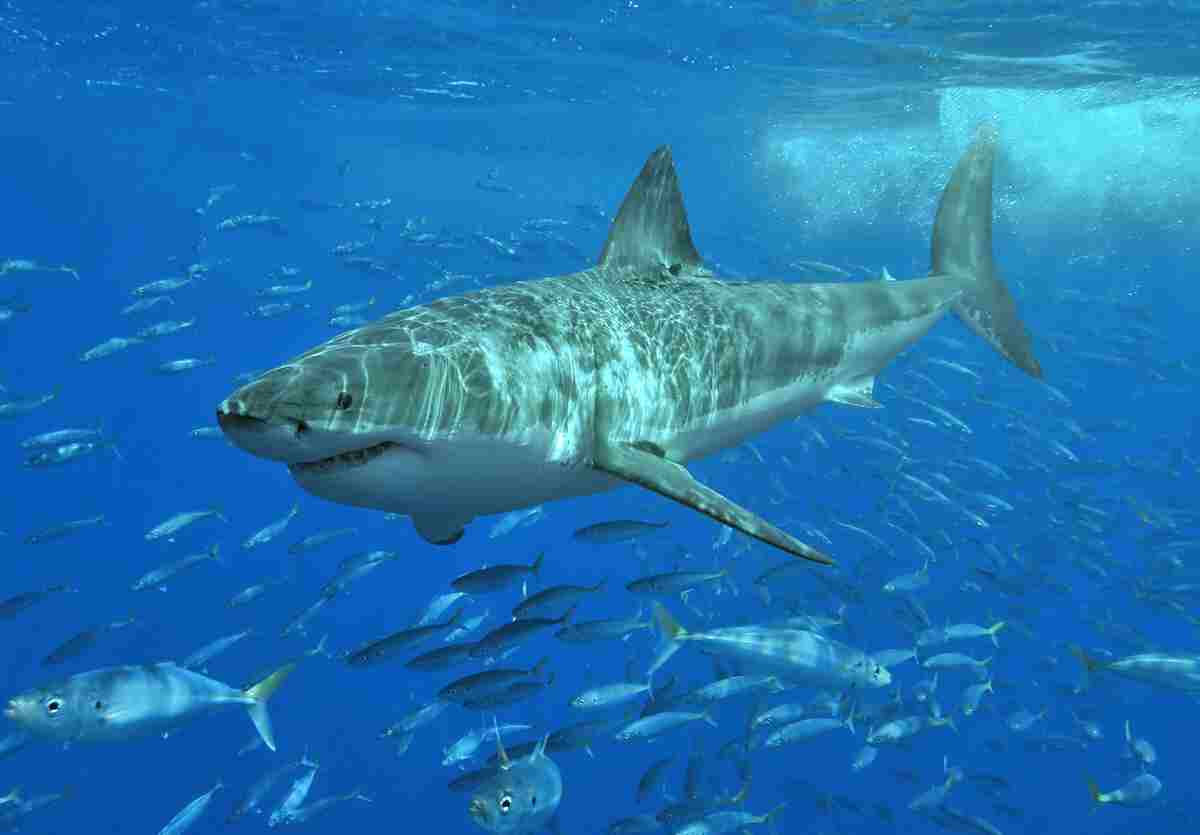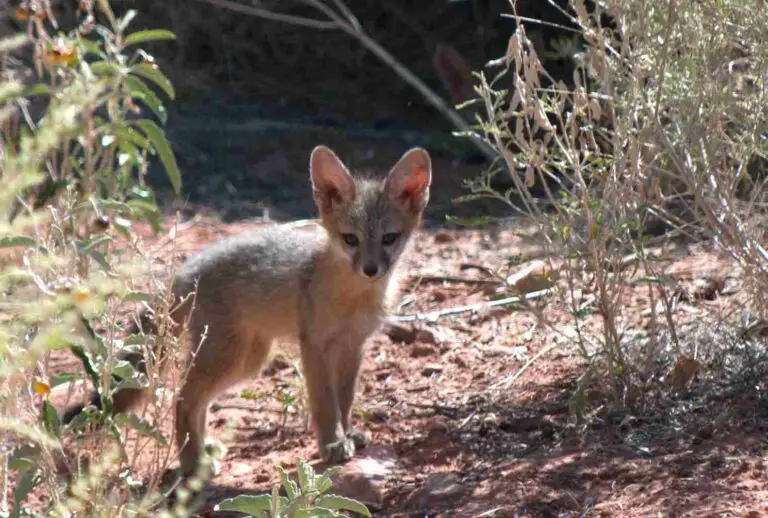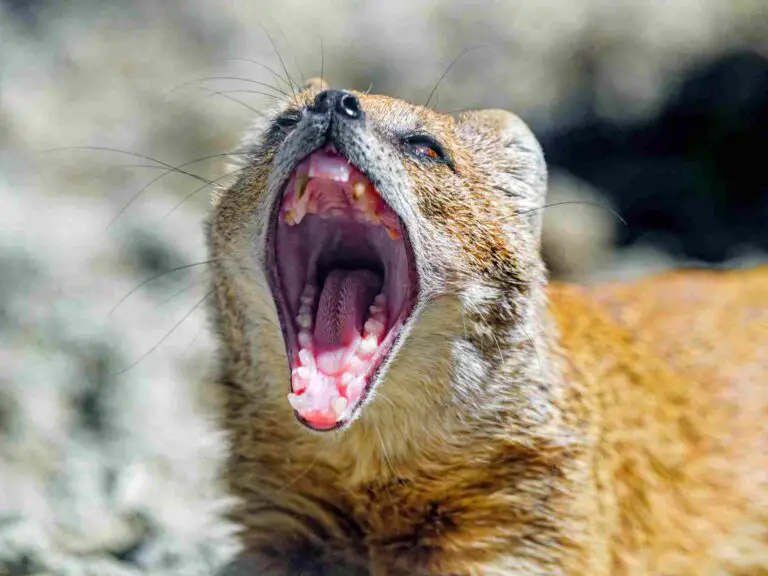9+ Examples of Scavengers in The Coral Reef Ecosystem
Examples of scavengers in the coral reef ecosystem are crabs, lobsters, amphipods, isopods, prawns, polychaetes, sharks, hagfish, and spotted ratfish. These scavengers play crucial roles in nutrient recycling by feeding on detritus, dead organisms, and organic matter. However, they face threats such as habitat destruction, pollution, and overfishing, emphasizing the need for conservation efforts to protect their populations and ensure the health of coral reef ecosystems.
1. Crab
Crabs are among the most ubiquitous and recognizable scavengers in coral reef ecosystems. Their iconic sideways movement and hard exoskeleton make them well-suited for navigating the complex terrain of coral reefs. These crustaceans play a crucial role in the reef ecosystem by scavenging on dead or decaying organic matter, including fish carcasses, algae, and other detritus.
With their powerful claws, crabs can break apart tough materials, accessing nutrients that might otherwise remain inaccessible to other organisms. Their scavenging activities not only contribute to nutrient recycling within the reef ecosystem but also help to maintain overall ecosystem health by preventing the accumulation of organic debris.
Various species of crabs inhabit coral reefs, each with its own specialized niche and scavenging behavior. For example, hermit crabs scavenge for food and shelter among the coral rubble, utilizing empty shells as portable homes. Meanwhile, larger species like the coral crab may scavenge on larger prey items or scavenge invertebrates trapped within the coral structure.
Despite their importance as scavengers, crabs also face numerous threats in coral reef environments, including habitat destruction, pollution, and overfishing. Conservation efforts aimed at protecting coral reefs must consider the vital role of crabs and other scavengers in maintaining the health and resilience of these ecosystems.
2. Lobster
Lobsters are another prominent scavenger in coral reef ecosystems, known for their large size and distinctive appearance. These crustaceans play a significant role in the reef’s nutrient cycling by scavenging on a variety of organic matter, including dead fish, mollusks, and crustaceans.
Equipped with powerful claws and a keen sense of smell, lobsters are adept scavengers capable of locating and consuming a wide range of food sources within the reef environment. Their scavenging activities contribute to the efficient recycling of nutrients, helping to maintain the balance of the ecosystem.
Despite their scavenging prowess, lobsters are also valuable prey for many predators, including fish, octopuses, and sharks. Additionally, like other reef organisms, lobsters are vulnerable to human impacts such as overfishing and habitat destruction, which can disrupt their scavenging activities and threaten their populations.
Conservation efforts focused on protecting coral reef ecosystems must consider the important role of lobsters as scavengers and predators. By safeguarding their habitats and managing fishing activities sustainably, we can help ensure the continued health and resilience of coral reef communities.
3. Amphipods
Amphipods are tiny crustaceans found in abundance throughout coral reef ecosystems. These small scavengers play a crucial role in recycling organic matter on the reef floor, feeding on detritus, algae, and dead animals.
Despite their diminutive size, amphipods are prolific scavengers, with many species possessing specialized mouthparts and digestive systems adapted for processing a wide range of organic materials. Their scavenging activities help to break down dead and decaying matter, releasing nutrients that are essential for the growth of reef organisms.
Amphipods also serve as an important food source for a variety of reef inhabitants, including fish, crustaceans, and sea stars. Their abundance and rapid reproductive rate make them a key component of the reef food web, supporting the entire ecosystem’s health and functioning.
However, like other reef organisms, amphipods face threats from human activities such as pollution, habitat destruction, and overfishing. Protecting coral reef habitats and minimizing human impacts is essential for ensuring the continued abundance and diversity of these vital scavengers.
4. Isopods
Isopods, commonly known as “sea roaches” or “pill bugs of the sea,” are small crustaceans found in virtually every marine habitat, including coral reefs. These scavengers play an important role in the reef ecosystem by feeding on detritus, algae, and dead organisms.
With their flattened bodies and numerous legs, isopods are well-suited for navigating the complex terrain of coral reefs, where they scavenge for food among the nooks and crannies of the reef structure. Their scavenging activities help to break down organic matter, releasing nutrients that are essential for the growth of reef organisms.
Isopods are also an important food source for a variety of reef inhabitants, including fish, birds, and other crustaceans. Their role as both scavengers and prey makes them a critical component of the reef food web, supporting the overall health and functioning of the ecosystem.
Despite their ecological importance, isopods, like many other reef organisms, face threats from human activities such as pollution, habitat destruction, and overfishing. Protecting coral reef habitats and minimizing human impacts is essential for ensuring the continued abundance and diversity of these vital scavengers.
5. Prawn
Prawns are crustaceans closely related to shrimp and are commonly found in coral reef ecosystems worldwide. These agile scavengers play a significant role in the reef’s ecosystem dynamics by feeding on detritus, algae, and small invertebrates.
With their slender bodies and specialized appendages, prawns are well-adapted for scavenging among the intricate coral structures of the reef. Their scavenging activities help to break down organic matter, contributing to nutrient recycling and the overall health of the ecosystem.
Prawns are also an important food source for many reef predators, including fish, cephalopods, and larger crustaceans. Their abundance and widespread distribution make them a key component of the reef food web, supporting the entire ecosystem’s balance and functioning.
However, like other reef organisms, prawns face threats from human activities such as habitat destruction, pollution, and overfishing. Protecting coral reef habitats and implementing sustainable fishing practices are essential for ensuring the continued abundance and diversity of these important scavengers.
6. Polychaetes
Polychaetes, also known as bristle worms, are a diverse group of annelid worms found in coral reef ecosystems worldwide. These scavengers play a crucial role in nutrient cycling and sediment turnover on the reef floor, feeding on detritus, algae, and small invertebrates.
With their segmented bodies and numerous bristle-like appendages, polychaetes are highly adapted for burrowing into the substrate and scavenging for food. Their scavenging activities help to break down organic matter, releasing nutrients that are essential for the growth of reef organisms.
Polychaetes are also an important food source for a variety of reef inhabitants, including fish, crustaceans, and sea stars. Their abundance and widespread distribution make them a key component of the reef food web, supporting the overall health and functioning of the ecosystem.
Despite their ecological importance, polychaetes, like many other reef organisms, face threats from human activities such as pollution, habitat destruction, and overfishing. Protecting coral reef habitats and minimizing human impacts is essential for ensuring the continued abundance and diversity of these vital scavengers.
7. Shark
Sharks, apex predators of coral reef ecosystems, play a unique role as both scavengers and top predators. While primarily known for their hunting prowess, sharks also scavenge on carrion and dead organisms, contributing to nutrient cycling within the reef ecosystem.
With their keen sense of smell and powerful jaws, sharks can detect and consume a wide range of organic matter, including fish carcasses, marine mammals, and other scavengable prey items. Their scavenging activities help to prevent the accumulation of organic debris on the reef floor, maintaining overall ecosystem health.
Sharks also play a crucial role in controlling the populations of reef inhabitants, including herbivorous fish and mesopredators. By regulating prey populations, sharks help to maintain the balance of the reef ecosystem and promote species diversity.
However, sharks face numerous threats in coral reef environments, including overfishing, habitat degradation, and illegal trade. Conservation efforts focused on protecting shark populations are essential for maintaining the ecological integrity and resilience of coral reef ecosystems.
8. Osedax
Osedax, commonly known as “bone-eating worms,” are a group of deep-sea scavengers that play a fascinating role in nutrient recycling within coral reef ecosystems. These unique organisms feed on the bones of dead marine vertebrates, including whales, fish, and sea turtles, that sink to the ocean floor.
With their specialized root-like structures, Osedax worms bore into the bones of carcasses, breaking down the hard tissue and extracting nutrients that are otherwise inaccessible to other scavengers. Their scavenging activities contribute to the efficient recycling of organic matter, releasing essential nutrients into the surrounding environment.
Despite their deep-sea origins, Osedax worms have been found in shallower waters, including coral reef habitats, where they can exploit the nutrient-rich substrates provided by dead organisms. Their presence in coral reef ecosystems highlights the interconnectedness of marine environments and the importance of scavengers in nutrient cycling.
Research on Osedax worms is still relatively limited, but their role as scavengers in coral reef ecosystems underscores the need for further study and conservation efforts to protect these unique organisms and the ecosystems they inhabit.
9. Hagfish
Hagfish, often referred to as “slime eels,” are primitive scavengers found in both deep-sea and shallow waters, including coral reef ecosystems. These jawless fish play a crucial role in nutrient cycling by scavenging on carrion and dead organisms that sink to the ocean floor.
Equipped with a unique defensive mechanism that allows them to produce copious amounts of slime, hagfish can quickly overwhelm and consume dead or dying prey. Their scavenging activities help to break down organic matter, releasing nutrients that are essential for the growth of reef organisms.
Hagfish are also an important food source for a variety of reef inhabitants, including sharks, eels, and larger fish. Their abundance and widespread distribution make them a key component of the reef food web, supporting the overall health and functioning of the ecosystem.
However, hagfish populations face threats from human activities such as overfishing and habitat destruction. Conservation efforts focused on protecting coral reef habitats and implementing sustainable fishing practices are essential for ensuring the continued abundance and diversity of these important scavengers.
10. Spotted Ratfish
Spotted ratfish, also known as chimaeras, are cartilaginous fish found in deep-sea and shallow waters, including coral reef ecosystems. These scavengers play a significant role in the reef’s ecosystem dynamics by feeding on a variety of prey, including small fish, crustaceans, and mollusks.
With their unique morphology and specialized sensory organs, spotted ratfish are well-adapted for scavenging among the intricate coral structures of the reef. Their scavenging activities help to regulate prey populations and maintain the balance of the ecosystem.
Spotted ratfish are also an important food source for a variety of reef predators, including sharks, rays, and larger fish. Their role as both scavengers and prey makes them a critical component of the reef food web, supporting the overall health and functioning of the ecosystem.
Conservation efforts focused on protecting coral reef habitats and minimizing human impacts are essential for ensuring the continued abundance and diversity of spotted ratfish and other important scavengers in coral reef ecosystems.
*Summary
-
Crab:
-
Ubiquitous scavengers in coral reefs
-
Play crucial role in nutrient recycling
-
Break down organic matter with powerful claws
-
-
Lobster:
-
Large scavengers feeding on dead fish, mollusks, etc.
-
Important for nutrient cycling and ecosystem balance
-
Vulnerable to overfishing and habitat destruction
-
-
Amphipods:
-
Tiny crustaceans feeding on detritus, algae, etc.
-
Essential for nutrient recycling and sediment turnover
-
Face threats from pollution and habitat destruction
-
-
Isopods:
-
Small scavengers known as “sea roaches”
-
Feed on detritus, algae, and dead organisms
-
Important prey for reef predators
-
-
Prawn:
-
Agile scavengers feeding on detritus, algae, etc.
-
Significant role in nutrient cycling and ecosystem balance
-
Vulnerable to overfishing and habitat destruction
-
-
Polychaetes:
-
Bristle worms involved in nutrient cycling and sediment turnover
-
Feed on detritus, algae, and small invertebrates
-
Important prey for reef predators
-
-
Shark:
-
Apex predators and scavengers in coral reef ecosystems
-
Contribute to nutrient cycling by consuming carrion
-
Face threats from overfishing and habitat degradation
-
-
Osedax:
-
Deep-sea scavengers known as “bone-eating worms”
-
Break down bones of dead marine vertebrates
-
Presence in coral reefs highlights nutrient recycling importance
-
-
Hagfish:
-
Primitive scavengers feeding on carrion and dead organisms
-
Play crucial role in nutrient cycling and ecosystem balance
-
Face threats from overfishing and habitat destruction
-
-
Spotted Ratfish:
-
Cartilaginous fish scavengers in coral reef ecosystems
-
Feed on a variety of prey, including small fish and crustaceans
-
Important prey for reef predators; vital for ecosystem balance
-
| Scavenger | Summary |
| Crab |
Ubiquitous scavengers, crucial for nutrient recycling, break down organic matter
|
| Lobster |
Large scavengers, important for nutrient cycling, vulnerable to overfishing
|
| Amphipods |
Tiny crustaceans, essential for nutrient recycling, face threats from pollution
|
| Isopods |
Small scavengers, feed on detritus, important prey for reef predators
|
| Prawn |
Agile scavengers, significant role in nutrient cycling, vulnerable to overfishing
|
| Polychaetes |
Bristle worms involved in nutrient cycling, important prey for reef predators
|
| Shark |
Apex predators, contribute to nutrient cycling, face threats from overfishing
|
| Osedax |
Deep-sea scavengers, break down bones, presence highlights nutrient recycling
|
| Hagfish |
Primitive scavengers, crucial for nutrient cycling, face threats from overfishing
|
| Spotted Ratfish |
Cartilaginous fish scavengers, vital for ecosystem balance, important prey
|
FAQs about Coral Reef Scavengers
Q: What role do scavengers play in coral reef ecosystems? A: Scavengers in coral reefs help recycle nutrients by feeding on dead organisms and organic matter. They contribute to the ecosystem’s health by preventing the accumulation of waste and promoting nutrient cycling.
Q: What are some common scavengers found in coral reefs? A: Common scavengers in coral reefs include crabs, lobsters, amphipods, isopods, prawns, polychaetes, sharks, hagfish, and various fish species like ratfish.
Q: How do scavengers contribute to the biodiversity of coral reefs? A: Scavengers provide important ecological services by controlling population levels of dead organisms, preventing disease outbreaks, and maintaining ecosystem balance. Their presence supports the diversity of species within the coral reef community.
Q: What threats do scavengers face in coral reef environments? A: Scavengers in coral reefs are threatened by habitat destruction, pollution, overfishing, and climate change. These factors can disrupt their scavenging activities and impact their populations, leading to cascading effects on the entire reef ecosystem.
Q: How can we protect scavengers in coral reef ecosystems? A: Protecting coral reef habitats, implementing sustainable fishing practices, reducing pollution, and addressing climate change are essential for safeguarding scavengers and maintaining the health and resilience of coral reef ecosystems.
